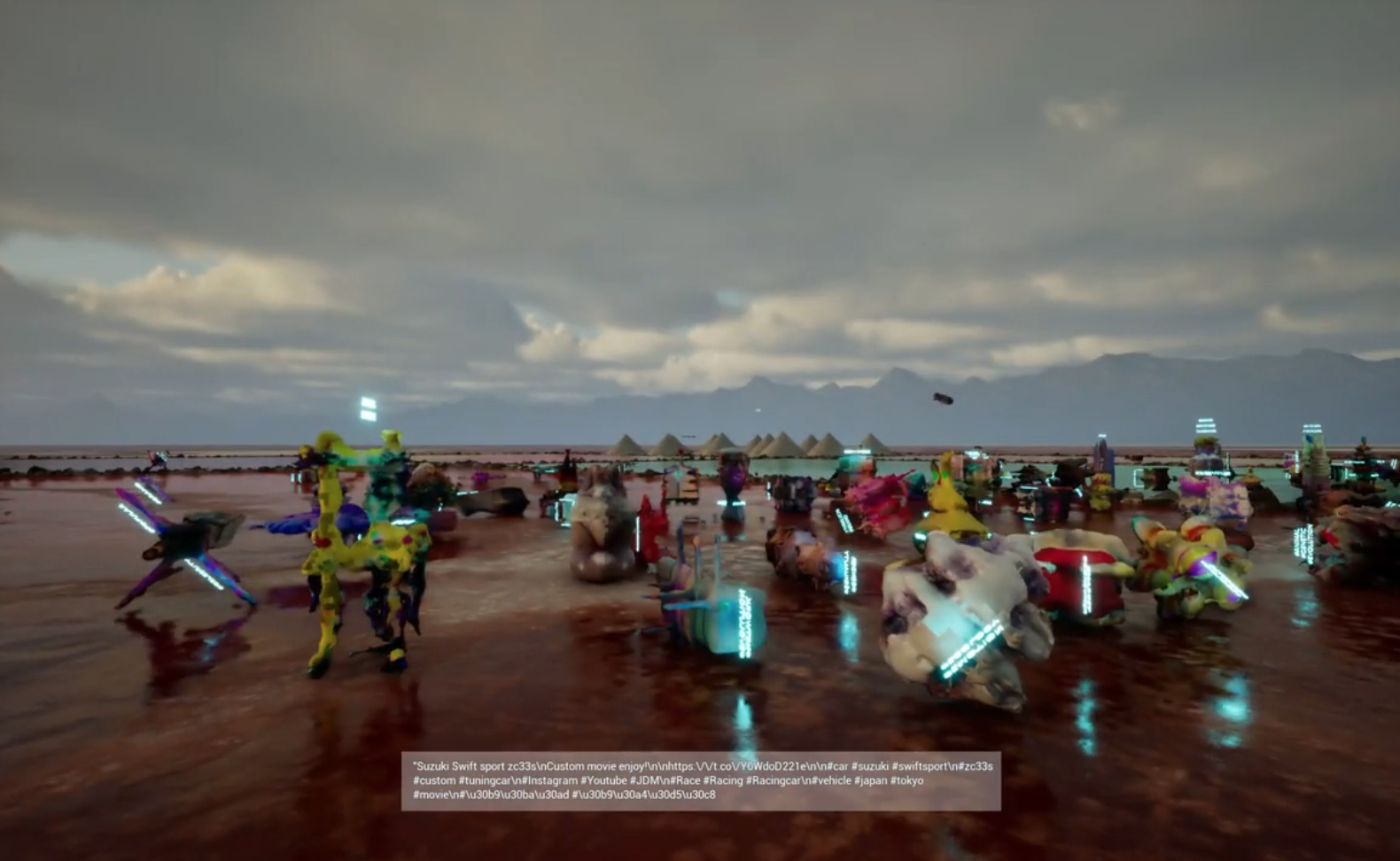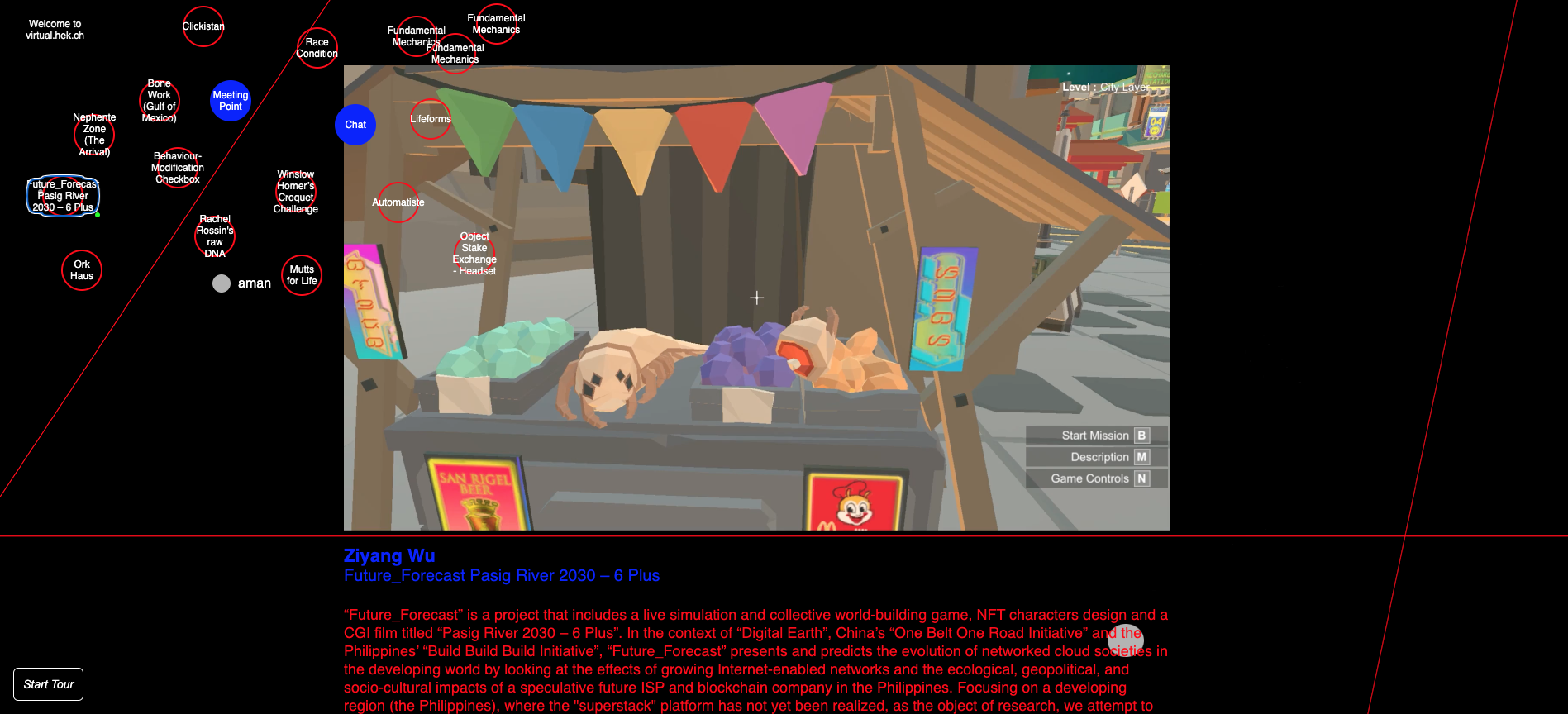#dump and future_forecast by ITP Fellow Mark Ramos, in collaboration with Ziyang Wu, are featured in Epoch Gallery and HEK Exhibitions.
2023
Live simulation and online environment
Infinite duration
#dump is a simulated "landfill" inspired by IRL mineral mining and fracking environments jointly built by AI, artists and social media users. The simulation is generated in real-time by a PHP Twitter bot (we’re calling it “dump-bot”) and Unreal Engine 5 Blueprints. "Dump-bot" lives on a hidden server in the NYU Computer Science department and monitors and scrapes Twitter in real-time. When keywords related to an AI-generated 3D model are found, this model will be instantly dumped into the landfill scene. Every moment, social media users around the world use keyboards and mobile phones to trigger these keywords, resulting in a constant dump of AI-generated models filling the landscape. It’s a world-without-end.
Future_Forecast is a live simulation + collective world building project on the Metaverse. In the context of “Digital Earth”, “One Belt One Road Initiative” and the Philippines’ “Build Build Build Initiative”, Future_Forecast speculates on the evolution of cloud networked societies in the developing world.
Based on Benjamin Bratton’s Stack theory, the project builds a 6-layer structure (earth, cloud, city, address, interface, user) as an interactive platformer on the Metaverse.
Players can "build" and permanently change the landscape of the project upon successful completion of the missions. we attempt to simulate a future between the virtual and the real, driven by both online and in-real-world data, and to explore the impact of network infrastructure construction and development on developing countries in the context of neo-colonialism
Data related to climate and environmental changes are connected to the metaverse space through real-time APIs to trigger simulated changes.
See it at the HEK exhibit!

